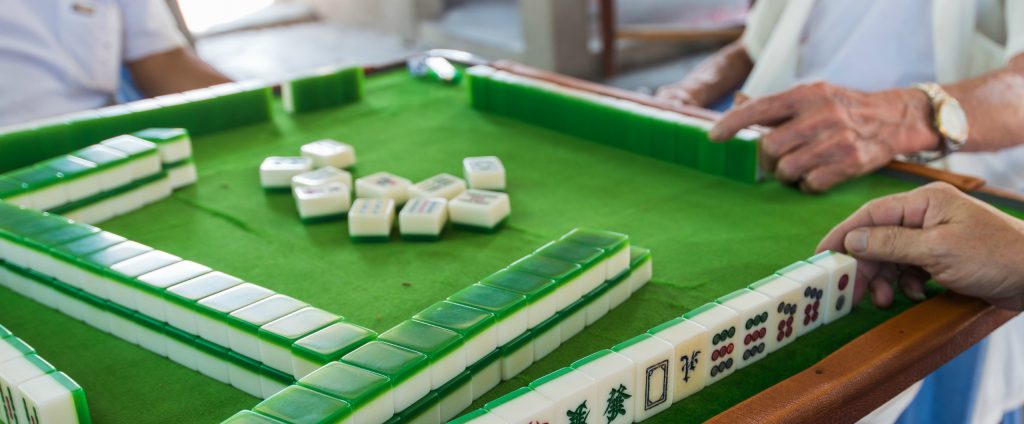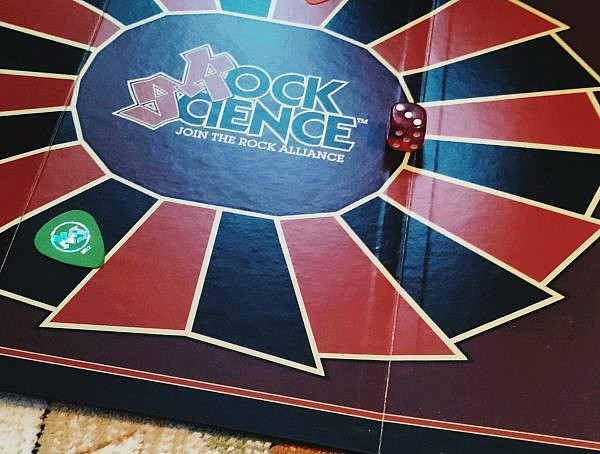Mahjong is a popular tabletop game played throughout East and South-East Asia. The game originates from China and is nowadays played also in some Western countries. It is commonly played with four players, but with three players in some South Korean and Japanese variations. Mahjong is a game that requires skill, strategy, and calculation but also involves a certain degree of chance. It is a common sight in Asian smoke-filled gambling dens, but also as commonly played at homes.
The game has a set of 144 tiles, which are based on Chinese characters and symbols. Regional variations may omit some tiles and/or add special ones. In most variations players receive 13 tiles at the start of game, hiding them from others. Players then draw one new tile each round and discard one. Players try to complete the hand by using the 14th drawn tile to form 4 melds/sets (3 tiles each) and a pair (2 tiles, duh). Meld means that the set is revealed to others. There is also a small class of special hands that lead to victory. Some of the tiles allow a set of 4. One tile at the end of the tile row can be assigned as the ‘joker’ tile, to be used as any tile for a combination.
Suits: There are 3 different suits: bamboos, dots and characters. Tiles of each suit are numbered from 1 to 9. There are altogether 108 pieces of these tiles. Special rules follow if players get tiles from 1 to 9 of one suit
Honor tiles: Winds and Dragons. The Winds are East, South, West and North. The Dragons are Red, Green and White. These only pair up with the exact same tile. The Red has the Chinese character ‘zhong’ in it, the Green has the character ‘fa’. Other special tiles, not considered “honor”, are “flowers”: plum, orchid, chrysanthemum, bamboo. Alongside are “seasons”: spring, summer, autumn, winter.
A rather standard set of rules gives instructions about how to draw a piece, how to rob a piece from another player, how to use numbered tiles and honors, what kinds of melds are allowed, how to deal the tiles and what is the order of play. However, there is a lot of regional variation to the rules including different scoring systems, criteria for winning hands and even private house rules.
So, the basic goal is to be the first player to get a hand of four sets and a pair. Sets are pung (3 same), chow (consecutive), or the rare kong (4 same), the terms are Cantonese.
The game offers good strategic fun, with some luck involved in each round. The tile you discarded early might have been the one needed to win the game later on. Or the tile one player discards could be the winning tile for 2 others, so the fastest to call it wins. Strategy comes to play when deciding how to form the sets from multiple possibilities and melding them on the table. Once there, they cannot be altered. Some moves will be regretted for sure. Mahjong is fun, addictive, and at times, aggravating.
You might also like
More from Game Reviews
Stories Untold – An Experimental Psychological Horror Adventure
Stories Untold is a narrative-driven horror adventure game and a truly remarkable take on the genre. The four episode anthology …
Kingdom Come: Deliverance II – A Sequel Worthy of a Knight
KCD II delivers a living, breathing medieval roleplaying game to its players. #RPG, #kingdomcome, #openworld
Moncage Review: A Puzzle Game with Mind-Boggling Optical Illusions
Solving a huge #optical_illusion #puzzle in a tiny cube to discover a dark, #emotional story of trauma
















